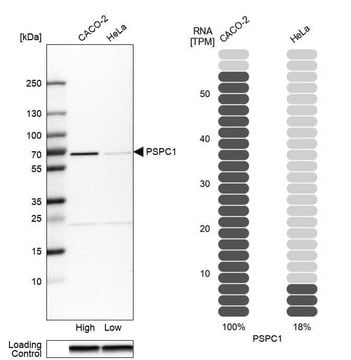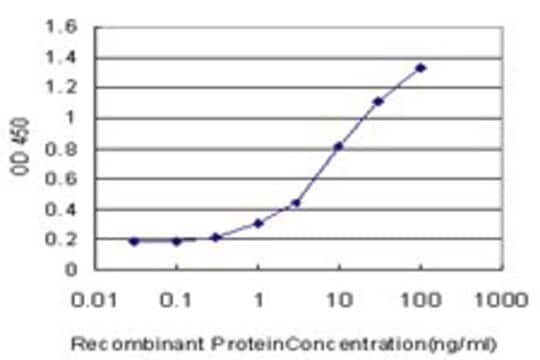ST1202
Anti-PGC-1α Mouse mAb (4C1.3)
liquid, clone 4C1.3, Calbiochem®
Sinonimo/i:
Anti-Peroxisome Proliferator-Activated Receptor- γ Coactivator 1 α
About This Item
Prodotti consigliati
Origine biologica
mouse
Livello qualitativo
Forma dell’anticorpo
purified antibody
Tipo di anticorpo
primary antibodies
Clone
4C1.3, monoclonal
Forma fisica
liquid
non contiene
preservative
Reattività contro le specie
mouse, human, rat
Produttore/marchio commerciale
Calbiochem®
Condizioni di stoccaggio
OK to freeze
avoid repeated freeze/thaw cycles
Isotipo
IgG
Temperatura di conservazione
−70°C
modifica post-traduzionali bersaglio
unmodified
Informazioni sul gene
human ... PPARGC1A(10891)
Descrizione generale
Immunogeno
Applicazioni
Immunocytochemistry (5-10 µg/ml)
Immunoprecipitation (10 µg/ml)
Paraffin Sections (whole mount) (see application references)
Attenzione
Stato fisico
Ricostituzione
Altre note
Rodgers, J.T., et al. 2008. FEBS Lett. 582, 46.
Mazzucotelli, A., et al. 2007. Diabetes 10, 2467.
Nemoto, S., et al. 2005. J. Biol. Chem. 16, 16456.
Note legali
Not finding the right product?
Try our Motore di ricerca dei prodotti.
Codice della classe di stoccaggio
10 - Combustible liquids
Certificati d'analisi (COA)
Cerca il Certificati d'analisi (COA) digitando il numero di lotto/batch corrispondente. I numeri di lotto o di batch sono stampati sull'etichetta dei prodotti dopo la parola ‘Lotto’ o ‘Batch’.
Possiedi già questo prodotto?
I documenti relativi ai prodotti acquistati recentemente sono disponibili nell’Archivio dei documenti.
Il team dei nostri ricercatori vanta grande esperienza in tutte le aree della ricerca quali Life Science, scienza dei materiali, sintesi chimica, cromatografia, discipline analitiche, ecc..
Contatta l'Assistenza Tecnica.








